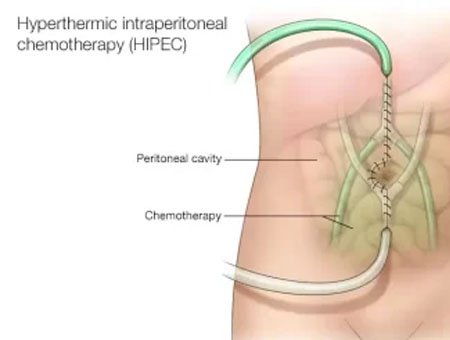
Cytoreductive Surgery (CRS) combined with Hyperthermic Intraperitoneal Chemotherapy (HIPEC) is a highly specialized surgical treatment for select cancers, including Carcinoma Ovary, Pseudomyxoma, Mesothelioma, Colorectal, and Gastric cancers. This advanced surgical technique involves removing all visible cancerous tissue and then washing the affected area with heated chemotherapy to kill any remaining cancer cells.
Benefits of CRS + HIPEC
• Effectively treats select cancers
• Delivers chemotherapy directly to affected area
• Minimizes systemic side effects
• Reduces chances of cancer recurrence
• Increases overall survival rates
HIPEC Surgery Procedure
HIPEC surgery is a two-stage process. Initially, we perform a Cytoreductive surgery(CRS). This is a major surgical procedure where all the visible tumor nodules are removed.
In the second stage, heated chemotherapy drugs are delivered in the abdomen by a special machine to kill microscopic tumour deposits that are not visible to the naked eye.
Recovery Time after HIPEC surgery
Recovery from HIPEC surgery usually takes about 4-5 weeks depending upon the burden of disease and extent of surgery. Patients may experience some side effects from the surgery and the chemotherapy drugs during this time. These side effects can include fatigue, nausea, vomiting, diarrhea, and abdominal pain.
HIPEC surgery has improved survival rates in pseudomyxoma, mesothelioma, ovarian cancers and gastric cancers.
Success rate of HIPEC surgery
The long-term success of the surgery depends on many factors, such as the stage and type of cancer, the patient’s age and overall health, and whether cancer has spread to other parts of the body.